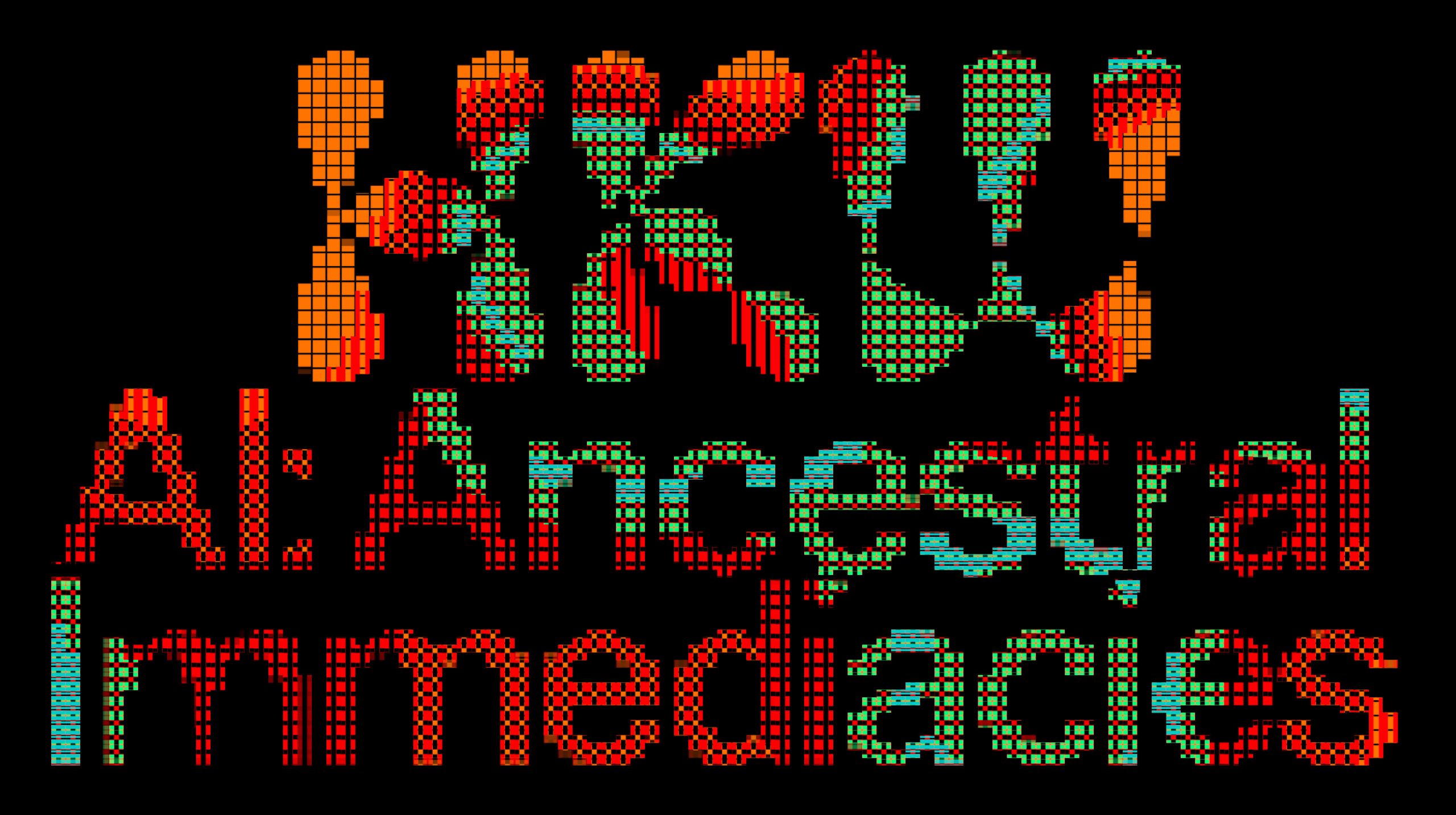The Collective Brain explores critiques of normative ideals about the individual brain that deem it the proprietor of consciousness, intelligence, and subjectivity. The programme considers how such notions, which emphasize the brain’s separation from the body, have influenced the development of computational architectures that assert individualism and separability. Expanding the view of the brain to include recent trends in computation — such as using the behaviour of slime molds and funghi to solve problems — the programme and festival asks what other brain metaphors exist and have existed, and how they might inform socialities in different ways. Can Artificial Intelligence be used to strengthen sociality against pathology, to reconnect minds with bodies, and repair relations to the wounded earth?
The human brain, and perhaps the brain itself, is point of emergence and utopian projection for many a computational ambition. An entanglement that can be traced historically to ancient cultures and scientific endeavours. In ancient Egypt, one of the first recorded technical metaphors known for the brain came about when its heavily folded surface was discovered. It was likened to the slag produced as a waste product of metal smelting – and just as the metallic mass, this tissue was imagined to be useless. Instead, the Egyptians attributed greater importance to the meninges, possibly based on experience with simple brain operations, in which they observed deformations of the meninges that had remained after injury, suggesting a more than merely material connection between mind and body that rendered the actual mass of the brain less relevant. It is well-known that the people of ancient Egypt buried their dead without the brain mass, arguably, because greater attention was paid to what sheathed and held the soul within, and the sarcophagus – ornamental infrastructure for the soul in its afterlife – mirrored this scientific ideal. Since then, hydraulic pumps, steam engines, enchanted looms and telephone switchboards have come to stand in how the study of the brain and the study of the culture it is studied in connect, and paradoxically, it is these technologies that perform an idea of the human brain – and thus also, of what it means to be human, to have consciousness, or be intelligent.
Cybernetics has been at the forefront of discussing how the brain metaphor connects not only to technology, but how distinct connections between technology and the study of the brain have brought about social infrastructures that shape and create humans in a governable form. In Europe, figures such as Friedrich Hayek, Donald O. Hebb, and Frank Rosenblatt worked on neural networks in the mid-20th century, while also building ideas on economics and governance. They shared a common vision of autonomous systems that could evolve, change, and learn without external direction, mirroring the emerging neoliberal ideology, which emphasizes individual freedom, market mechanisms, and minimal government intervention*). It has thus been said that networked technology creates the perfect conditions for thriving individualism, a neoliberal conception of personhood that paradoxically emerges out of the technological idea of the shared consciousness of a collective brain soup.
When, in January 2024, Neuralink implanted its first brain/computer interface, it seemed this brain soup had persevered over a body otherwise completely paralyzed. However, a month after the surgery, 85% of the link’s threads had become irresponsive, reopening the question whether the mind might after all need a body to function fully, and whether it was the human engulfing technology, or if indeed, the digital might come to engulf the human.
The brain metaphor – the idea that the mind can be located and thus potentially replaced through a computational object – seems to be rolling down a path of a digital cannibalism. But what if this cannibalism has more to do with antropofagia than with destruction? The Movimento antropófago, whose foundational figures Oswald de Andrade and Tarsila do Amaral are considered the “midwives” of Brazilian modernism, offers a new perspective on the mind-body relations of the digital now. do Amaral’s painting Abaporu is evocative of and can be reinterpreted for the current moment in the service of a collective, embodied and networked mind, one that needs not only the head (brain), but focuses more on the body and its relationship to the environment. While Anthropophagy originally described the honorable and ritualized ingestion of the other’s strengths and intelligences so as to adapt one’s own, it seems that the current brain soup metaphor rather guides society towards a mindless ocean of digital sameness. If we are indeed living in a digital and collective brain soup, then who is eating who?
Beyond cultural pessimism, the assertion of digitality eating the human other, means that brains, intelligences, and subjectivities could be found as collective and shared. These findings are emergent in networked research on plants, fungi and other intelligent creatures, and might help humans reassert their socialities. As AI has become the programmatic umbrella catch phrase for all forms of technological and future oriented intelligences, it not only takes inspiration from, but factually alters social ideas of brains, and the entities that host them, the environments that they emerge from, and the malleability – or neuroplasticity – ascribed to all of these material and immaterial brains. And yet, the brain metaphor is underdeveloped in how – starting from technology – humans might seek to study the normative desires and forms of social planning that exist within and through technological ideology of our current intelligences and forms of consciousness. What forms of ecological normativity, what ideas of society, what economic and social forms of intelligence emerge from these slippages? ,
Taking as a starting point the convergences between neuroscience and broader ideas of intelligence—from plants, fungi, and spirits to digital humans and collective neurons—AI (Ancestral Immediacies): The Collective Brain explores critiques of normative ideals the individual brain that deem it the proprietor of consciousness, intelligence, and subjectivity.— The programme considers how such notions, which emphasize the brain’s separation from the body, have influenced the development of computational architectures that assert individualism and separability. Expanding the view of the brain to include recent trends in computation—such as using the behaviour of slime molds and funghi to solve problems—the programme and festival asks what other brain metaphors exist and have existed, and how they might inform socialities in different ways. Can AI be used to strengthen sociality against pathology, to reconnect minds with bodies, and repair relations to the wounded earth?
By Sara Morais dos Santos Bruss
*) see, for example, Orit Halpern, Neural “freedoms”: Population, choice, and machine learning, in:
Queer Reflections on AI (eds. Klipphahn Karge et al, Routledge: 2023)
Language: Enlish with German translation
Format of the event: lectures, conversations, performances, workshops

